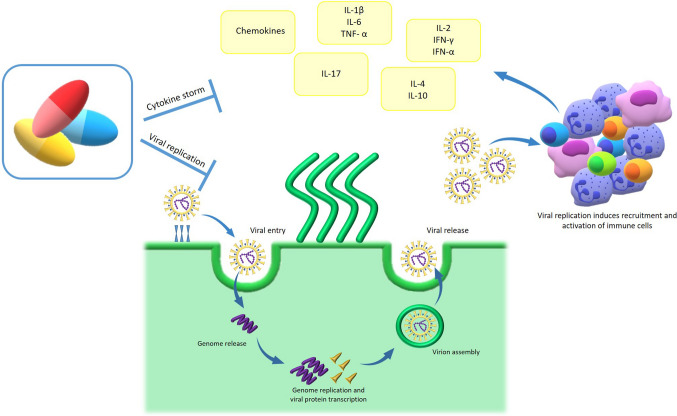Fig. 2.
SARS-CoV-2 infects mucous membranes expressing high levels of ACE2 as nasal and larynx mucosa, then may pass into the lungs through the respiratory tract. After receptor recognition and viral entry into the ciliated epithelial cells, SARS-CoV-2 replicates the viral genome and encodes structural and non-structural viral proteins. Therefore, new virions are assembled, and released. Active viral replication leads to production of type I interferon (IFN) and influx of neutrophils and macrophages. These cells are the major cell sources of pro-inflammatory cytokines and chemokines as interleukin (IL)-1β, IFN-γ, inducible protein-10 (IP-10), and monocyte chemoattractant protein-1 (MCP-1), which may result in activation of T-helper-1 (Th1) cells. Moreover, IL-17, produced by Th17 cells recruits monocytes and neutrophils to the site of infection contributing to the inflammation. Finally, Th2 cytokines such as IL-4 and IL-10 are also produced with the attempt to suppress the hyper-inflammation. This cytokine storm, as well as the several stages of viral replication, are the target of the current therapies for COVID-19

